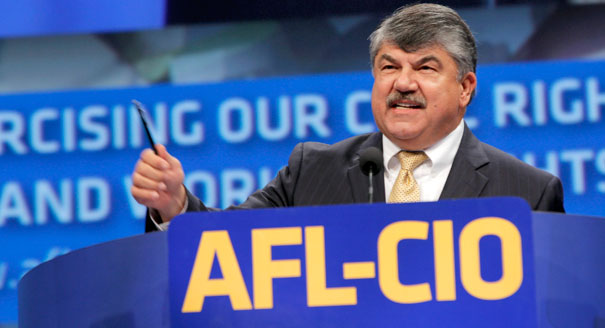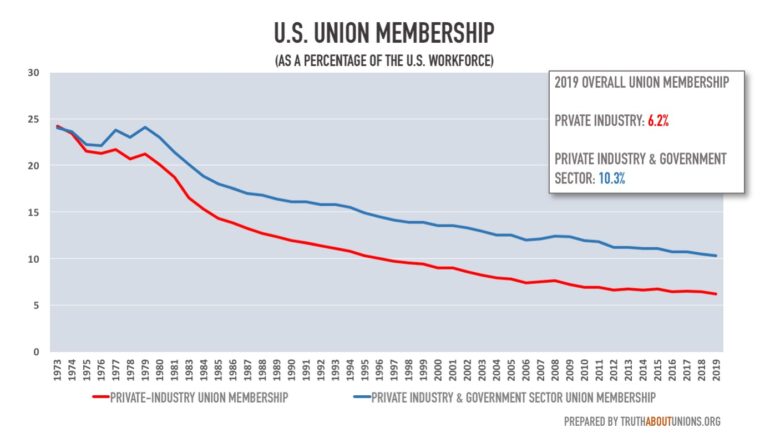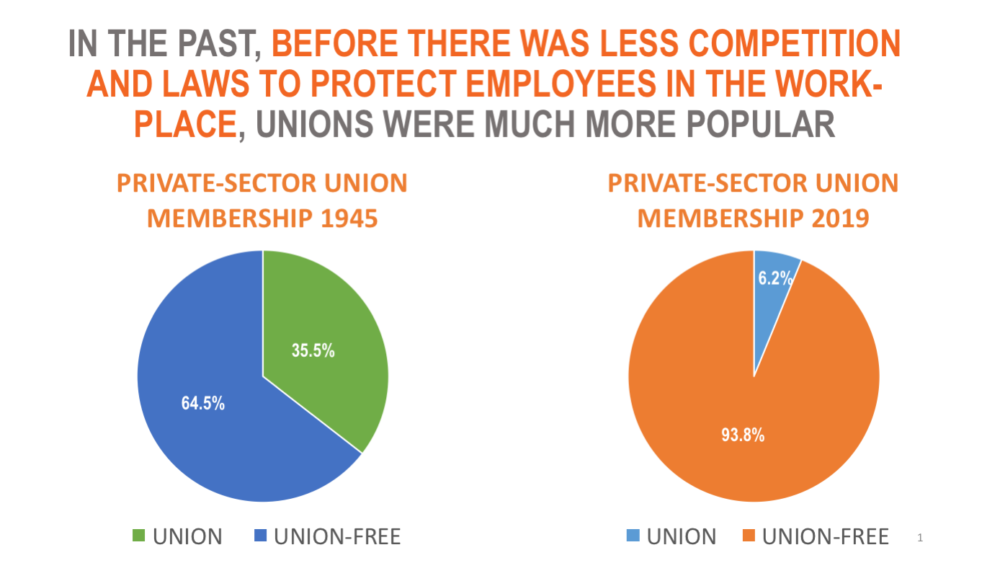Labor Unions’ Crisis

“The crisis for labor has deepened. It’s at a point where we really must do something differently. We really have to experiment.”
Richard Trumka, AFL-CIO President

After reaching their representational peak of 35.5% of all workers in 1947, labor unions in the U.S. have been on a near steady decline ever since.
While there are a variety of reasons for unions’ decline (from globalization to a shifting of resources away from organizing), today’s unions have become almost wholly dependent on the government to help them resuscitate their declining numbers.

In the mid-2000s, unions attempted to get legislation enacted that had two fundamental goals:
- Enable unions to unionize workers by effectively eliminating secret-ballot elections; and
- Force companies and their employees into union contracts if, after 120 days of negotiations after unionization, there was no agreement.
After passage in the U.S. House of Representatives in 2007, this legislation—misleadingly named the ‘Employee Free Choice Act‘ (or EFCA)—ultimately failed to pass in the U.S. Senate.
Following the failure to enact EFCA, unions have now placed their hopes in having Congress pass (and a future President sign) legislation like the PRO Act or, alternatively, the so-called “Workplace Democracy Act” (both of which are very similar) to enable unions to rebuild their dwindled memberships.
Related:
- AFL-CIO Budget Is a Stark Illustration of the Decline of Organizing
- Decline of Labor Unions Linked to Rise of Globalization
- The Case Against the Employee Free Choice Act

